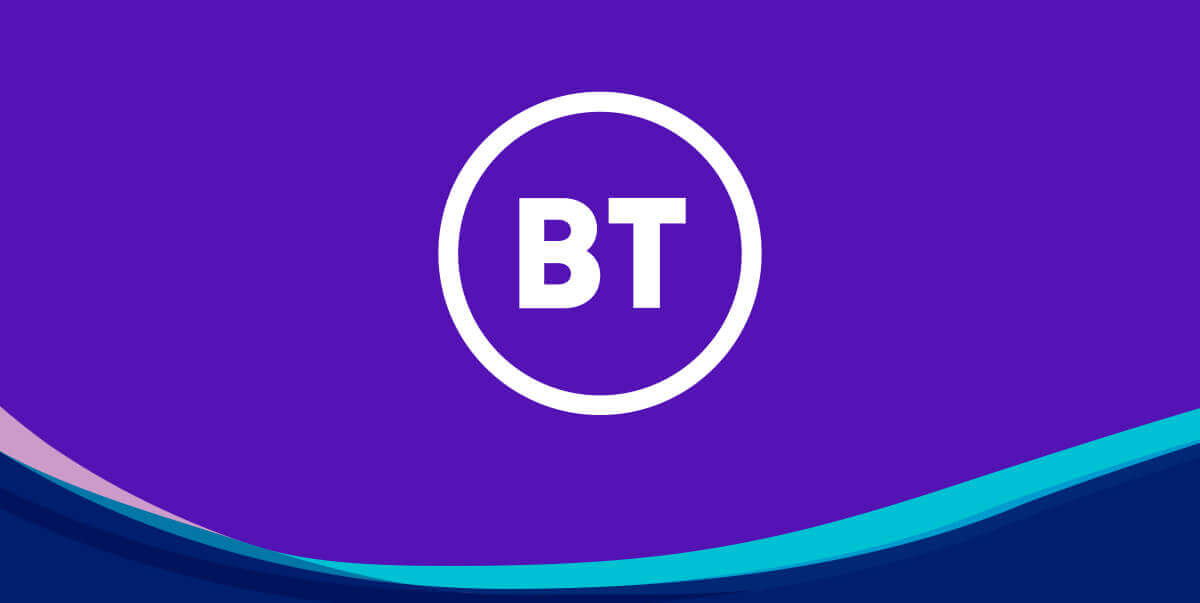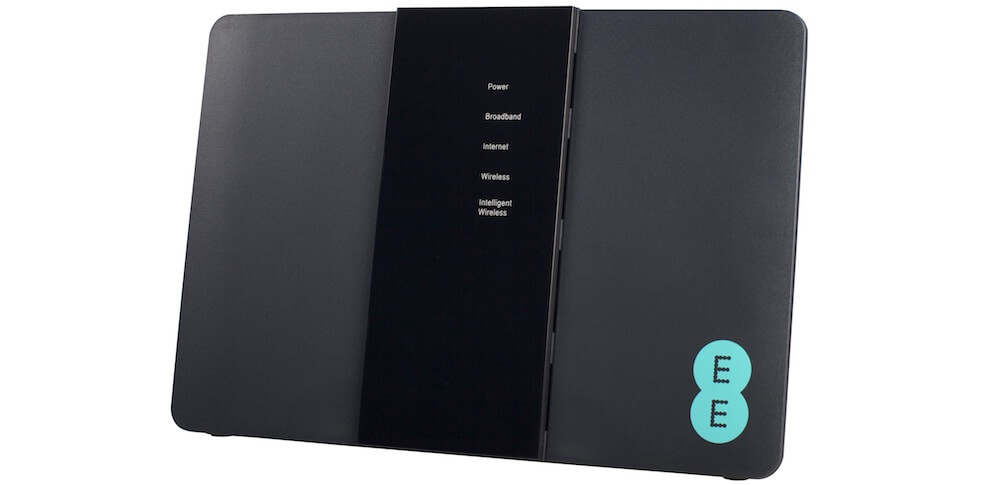BT broadband vs EE broadband: Which is best?
Dan Howdle | May 25th, 2023

BT or EE... which pair of letters should you trust to deliver you the best broadband package possible? Both the telecoms giant and the relatively new player in the broadband space offer similar packages on paper, so let's break things down to see how the two actually measure up.
Whichever you decide upon, your money is more or less going to the same place anyway – BT acquired EE (itself formed through the merger of Orange and T-Mobile) in 2016, and although EE still operates as a separate provider, the two businesses have now joined forces on a large scale, with EE even promoting BT services on its website and vice versa.
Key feature comparison
Here's a quick feature comparison on how BT and EE stack up.
| Feature | BT broadband | EE broadband |
|---|---|---|
| Download speeds | Up to 900Mbps | Up to 900Mbps |
| Upload speeds | Up to 110Mbps | Up to 28Mbps |
| Router | BT Hub | EE Smart Hub |
| Network | Openreach | Openreach |
Broadband speed

Winner: BT
When it comes to choice, BT offers a greater range of packages than EE with the inclusion of its 50Mbps speed. Pricewise there is little to choose between the providers, although, at the time of writing, BT’s speeds are on average, cheaper than those of EE. Neither provider offers standard broadband services any longer.
EE's five packages include two fibre options averaging 36Mbps and 74Mbps and three ultrafast, full fibre speeds of 100Mbps, 500Mbps and 900Mbps. Meanwhile, BT offers the same five packages plus the additional fibre speed of 50Mbps.
Both EE and BT customers in a full fibre area will be able to enjoy guaranteed speeds whichever package they choose, whereas customers in a non-full fibre area may find that their speed is faster or slower than that advertised. This is because regular fibre connections operate over both fibre and copper lines, whereas full fibre does not use any copper, and hence guarantees faster and more reliable speeds.
BT provides its Stay Fast Guarantee to all its broadband customers, providing reassurance of a minimum speed, regardless of which package you choose. EE also shows the minimum guaranteed download speed new customers can expect to receive, regardless of the package they choose, so both providers offer reassurance when it comes to knowing what speed you are actually likely to get.
-
 £50 Reward CardFibre 1
£50 Reward CardFibre 1- 50Mb average speed +
- Unlimited usage +
- No phone line
- £50 Virtual Reward Card
£29.99 per month(increases on the 31st March 2025 by CPI +3.9%)£50 Reward Card£0 one-off cost24 month contract -
 Fibre Essential
Fibre Essential- 36Mb average speed +
- Unlimited usage +
- No phone line
£29.99 per month(increases on the 31st March 2025 by CPI +3.9%)£0 one-off cost24 month contract -
 £50 Reward CardFull Fibre 100
£50 Reward CardFull Fibre 100- 150Mb average speed +
- Unlimited usage +
- No phone line
- £50 Virtual Reward Card
£29.99 per month(usually £30.99)(increases on the 31st March 2025 by CPI +3.9%)£50 Reward Card£31.99 one-off cost24 month contract
Packages

Winner: BT
There’s not a lot to choose from between the two providers when it comes to packages. BT’s Halo scheme is more comprehensive than EE’s Smart WiFi, but is considerably more expensive; EE’s offering only costs an extra tenner a month.
As mentioned, EE has five main packages. All EE bundles benefit from completely unlimited usage with no data caps or throttling, meaning you can download and stream to your heart's content. An 18-month contract is required for all EE’s broadband plans and all plans are broadband only, although you can choose to bolt on a calls package if you want to use your landline.
EE offers customers its Smart WiFi. This is comprised of both a 4GEE Wifi Mini router and a Smart WiFi booster disc that ensures you receive a strong wifi signal throughout your home. Should your broadband service go down, EE will automatically supply your 4GEE WiFi Mini with 250GB of data to keep you online until your cabled service is fixed. As a bonus, you will receive free 2GB allowance for your 4GEE WiFi Mini each month that you can also use to get online when you are away from home.
In comparison, BT offers six packages, all of which are available as either broadband only or broadband and phone. Customers choosing broadband and phone will be charged an extra fiver a month, which just means you can make chargeable pay-as-you-go calls.
BT offers Hybrid Connect, a tech solution to keep you online in the event that your main broadband service goes down. BT refers to it as “unbreakable wifi”. Customers are sent a Mini Hub that will automatically connect to EE’s 4G signal to provide you with an alternative means of getting online until your fibre service is restored.
Customers can also sign up for BT Complete Wi-Fi, which guarantees you a strong signal in every room of your home. You will be sent a Wi-Fi Disc, which once plugged in and connected to your Smart Hub, should ensure every room in your home is connected. Plus, if one Wi-Fi Disc doesn’t do the job, BT will supply you with up to two more discs at no extra cost. If three Wi-Fi Discs still don’t do the job, you can claim £100 compensation from BT. New customers wanting both Hybrid Connect and Complete Wi-Fi in one bundle can sign up to BT Halo 3+, but this does work out a lot more expensive than taking the extras separately.
Customer service

Winner: EE
BT has the edge over EE when it comes to customer service satisfaction overall, with higher ratings in the most recent Ofcom survey, although both sit above the sector average.
BT doesn't exactly have the best track record in this field, but is now doing exceptionally wellcoming out top in the most recent Ofcom report with an overall customer satisfaction rating of 88 per cent, just a touch above the sector average of 83 per cent.
In comparison, EE also ranked highly, coming in second place with 85 per cent of customers satisfied with their service. When it comes to satisfaction with complaint handling specifically, BT also comes out top with 55 per cent of customers happy with how their complaint was handled, against 49 per cent of EE customers. BT also came out top with satisfaction of speed, with 83 per cent of customers satisfied, against 79 per cent of EE customers and a sector average of 80 per cent.
Customer service lines for BT are open from 8am to 9pm during the week and 8am to 8pm on Saturday, while EE’s phone line is open from 8am to 9pm Monday to Friday and 8am to 8pm at the weekend. Both providers offer live chat and are also contactable via social media on Twitter and Facebook. Both BT and EE pride themselves on the fact that their call centres are all either UK or Ireland-based.
Router and technology
Winner: Draw
There is absolutely nothing between the two providers when it comes to routers, with both providing the same Smart Hub with different branding to fibre customers.

The Smart Hubs are very capable, dual band routers that use smart scanning to automatically connect to the best wireless channels, ensuring your devices receive the optimum speed at all times. They are also equipped with four gigabit ports so you can connect up to four devices via ethernet cable if required, and the seven antennae ensure a good signal reach around your home.
For customers that cannot access fibre of any kind, EE offers its basic Bright Box router with its standard broadband package, which is a perfectly functional router and saves the Smart Hub for its fibre customers.
Extras

Winner: BT
BT edges it again thanks to a wider array of functions and features, although those who use a lot of mobile data might be better served by EE's generous data add-ons.
BT clearly takes online security seriously, with a three-pronged defence system – Parental Controls allow you to control what can be accessed online, Virus Protect covers up to 15 devices against harmful software and activity, and Web Protect offers warnings if you ever come across anything that seems fishy.
EE's comparable offerings aren't quite so robust, although you do get a year of Norton Security Premium free to protect up to 10 devices from harm. After the 12 months is up, it's £79.99 a year to continue using it
BT no longer offers SIM-only deals, and instead directs customers to EE’s offerings. Existing BT broadband customers can claim exclusive double data deals on EE, as well as other special offers such as six months’ half price. EE mobile customers signing up to EE broadband can enjoy a regular 10 per cent discount on their broadband bill and up to 20GB extra on their mobile plan every month at no extra cost.
When it comes to landlines, both EE and BT broadband customers can choose to have broadband with or without a phone line. Call packages are available with both for an extra monthly fee.
BT has a vast network of wi-fi hotspots around the country, with more than five million available for BT customers to use while they're out and about. These hotspots are also free for EE customers to use.
Overall

Winner: BT
Now that EE and BT have joined as one, there is very little difference between them, with the same router and, by and large, the same download speeds available. However, BT takes the crown overall, with its impressive customer service ratings and its unbeatable Halo 3+ wi-fi guarantee package. BT's plentiful amounts of security software also make it the winner.
However, EE's offerings are by no means below par – especially with the extra data boost thrown in for mobile customers. Ultimately your choice of provider will likely come down to price and whether you can benefit as an existing EE mobile customer or not.